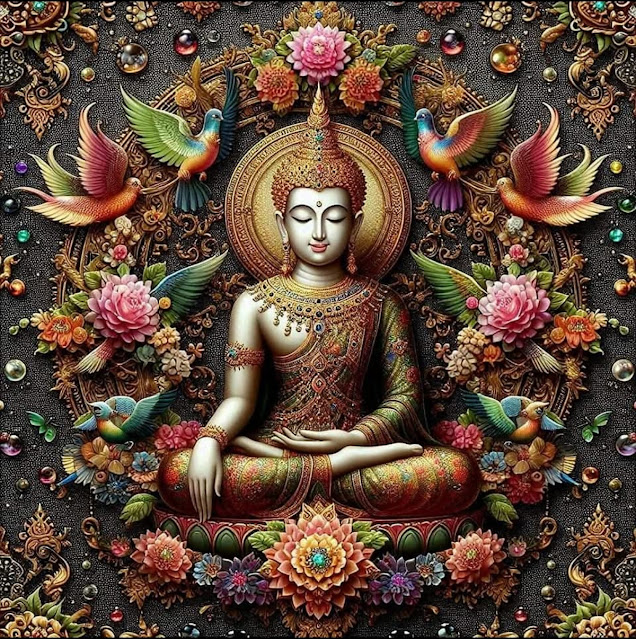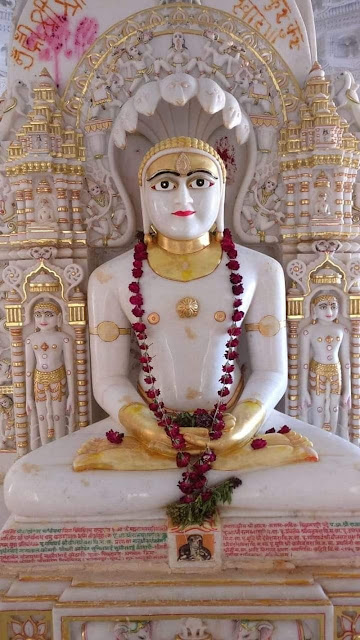The Architecture of Visualization – The Nyingma Tradition
In the Nyingma lineage, Guru Yoga is more than a preliminary practice; it is the ultimate path to realization. Having explored the devotion required in Chapter 2, we now turn to the Architecture of Visualization. Specifically, we look at the practice centered around Guru Rinpoche (Padmasambhava), the Precious Master who embodies the wisdom of all Buddhas.
The Field of Merit: Summoning the Presence
The practice often begins with the Seven-Line Prayer, a powerful invocation that transcends ordinary words. The practitioner visualizes Guru Rinpoche not as a distant historical figure, but as a living presence of light and wisdom. He sits upon a lotus, sun, and moon disc—symbolizing the purity and clarity of the enlightened mind—surrounded by a vast assembly of lineage masters, dakinis, and dharma protectors.
Every detail of Guru Rinpoche’s form is a symbolic teaching. His Khatvanga staff represents the mastery of energies, while his semi-wrathful gaze signifies the power to pierce through the thickest veils of ego and delusion.
Support & Reflection
If you enjoy my articles and would like to support my creative work, you can make a small contribution below. Your support helps me continue writing and sharing more inspiring stories. (Payments are processed securely via PayPal .)
The Four Empowerments: The Transmission of Light
A central technical component of Nyingma Guru Yoga is the reception of the Four Empowerments. This is visualized as concentrated rays of light emanating from the Guru’s three centers and dissolving into our own, purifying our karma at the root:
- The White Light (OM): Radiant light from the Guru’s forehead enters our own forehead, purifying the negative karmas of the Body.
- The Red Light (AH): Vibrant light from the Guru’s throat enters our throat, purifying the obscurations of Speech and energy.
- The Blue Light (HUNG): Deep sapphire light from the Guru’s heart enters our heart, purifying the delusions of the Mind.
- The Fourth Empowerment: All three lights merge, or a clear light emanates, leading us to recognize the Vajra Wisdom—the non-dual nature of our own mind and the Guru’s mind.
Dissolution into the Great Perfection
The practice culminates in the dissolution. Guru Rinpoche melts into a sphere of radiant light and merges into the practitioner’s heart. In this moment, the boundary between "teacher" and "student" vanishes. We rest in the state of Dzogchen—the Great Perfection—simply abiding in pure, effortless awareness, where our ordinary mind is recognized as the Buddha himself.
Support & Reflection
If my writings or reflections resonate with you, you may support this Dharma page here — subscription starts from MYR 2.49/month (≈ USD 0.60).
Footnote: This article is intended solely for general illustration and educational reading. It does not disclose any secret tantric texts or teachings, and makes no attempt to transmit esoteric instructions that are restricted or require formal empowerment.
All effort has been made to respect the sacred boundaries of Vajrayana practice and to uphold the integrity of samaya vows and Dharma protectors.
Thank you for reading. May you find peace and great bliss. Your support helps spread the Buddha’s precious teachings and turn the Dharma wheel in the world.
Aspiration for Bodhichitta
May the precious Bodhichitta, which has not yet arisen, arise and not diminish, but rather increase further and further.
Dedication of Merit
By this merit, may we swiftly attain omniscience. Having overcome the enemies of wrongdoing, may we liberate all beings from the ocean of existence, with its stormy waves of birth, old age, sickness, and death.
























































